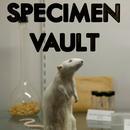It’s Only Post-Natural
If you take a trip to your local natural history museum, you’ll likely discover the story of our planet told through vast collections of species, vibrant dioramas and exhibits on the evolution of life on earth. But historically, these institutions have done a poor job of showing where humans have influenced “the natural world.” Some museums include the story of human impact on the environment — endangered and extinct species on display remind us of the dangers of hunting and deforestation — but humans have played an even more direct and intentional role in the evolution of certain organisms. And there’s a quirky museum in Pittsburgh that is finally telling that story.
Richard Pell is the director of the Center for PostNatural History. He defines post-natural organisms as ones that have been altered by people intentionally and heritably. “Heritably meaning we’ve altered its evolutionary path in some fashion. It affects its offspring, it’s not just a dog with a weird haircut. It’s we’ve bred dogs that have weird hair,” he said.
By including and preserving these often neglected species, the Center for PostNatural History interrogates the question of where what’s truly natural ends and what is influenced by humans begins.
